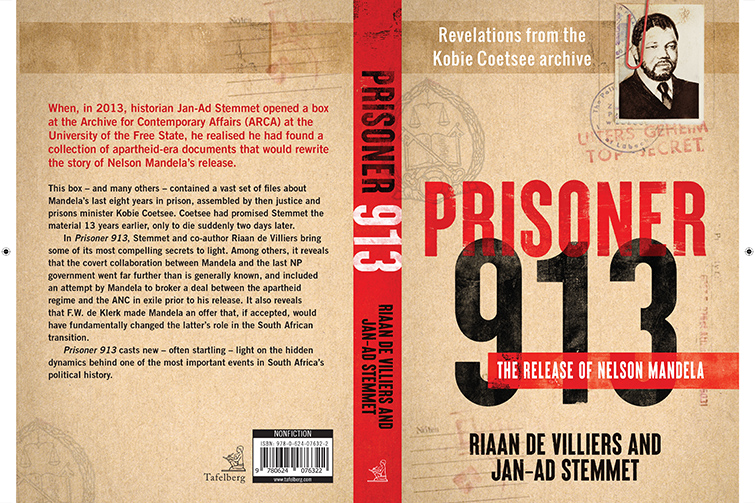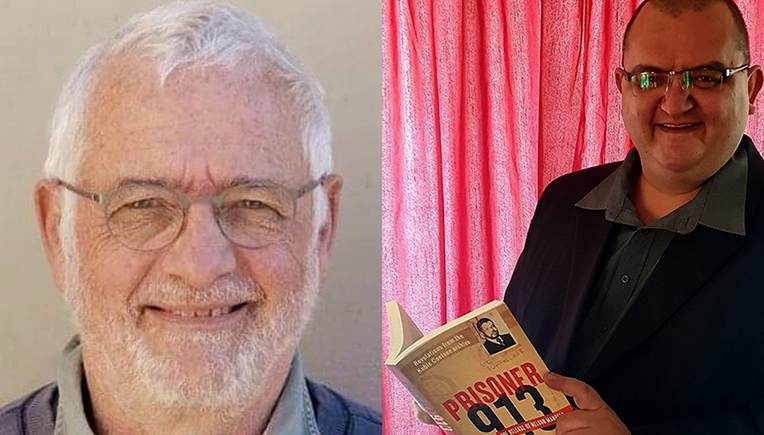18 August 2020
|
Story Rulanzen Martin
|
Photo NB Publishers
 Prisoner 913: The Release of Nelson Mandela will give readers the opportunity to meet Nelson Mandela as man, husband, father, politician, strategist and diplomat, all in his own words.
Prisoner 913: The Release of Nelson Mandela will give readers the opportunity to meet Nelson Mandela as man, husband, father, politician, strategist and diplomat, all in his own words.
It is well known that prisoner number 46664 is synonymous with Nelson Mandela and the historical account of his imprisonment on Robben Island. But few people know that 913 was in fact Nelson Mandela’s actual cell number on Robben Island. With the release of a new book,
Prisoner 913: The Release of Nelson Mandela,
Dr Jan-Ad Stemmet from the
Department of History at the University of the Free State (UFS), and his co-author Riaan de Villiers, narrate the verbatim, untold story of Mandela’s time in Pollsmoor and Victor Verster prisons, after his imprisonment on Robben Island.
Prisoner 913: The Release of Nelson Mandela is, as yet, the only book which tells the factual behind-the-scenes story of the events that led to Mandela’s release, in his own words, recorded without his knowledge. “The book moves far behind and beyond the ‘official narrative’ and explains what process and moments interlocked to eventually unlock his prison doors,” says Stemmet.
For readers and scholars with a keen interest in the history of Mandela, the book is a time machine which takes the reader to the actual moment history was made. “The reader becomes the proverbial ‘fly on the wall’ and gains immediate access to the country’s history being made in real time, undiluted and in the moment,” he says.
Coetsee archive collection holds key to Mandela’s ‘in-prison’ story
The book is the product of a seven-year project which started when Stemmet opened a box from the Kobie Coetsee Collection at the Archive for Contemporary Affairs at the UFS. Kobie Coetsee was Minister of Justice and Correctional Affairs from 1980-1984.
“The boxes were stacked with verbatim transcripts of someone classified as ‘913’. I was totally confused but fascinated. I requested similar boxes,” says Stemmet, who admits it took him some time to decipher that 913 was a code name for Nelson Mandela. “These were the word-for-word transcripts off all the secretly recorded conversations with Madiba that were conducted in jail during the 1980s and ending with his release in 1990,” Stemmet says.

Riaan de Villiers, left, and Dr Jan-Ad Stemmet. Photos: Supplied
Amongst these transcripts were ‘heaps of government materials related to Mandela’, on how the PW Botha apartheid administration viewed Prisoner 913. “Eventually I sat with more than 10 000 pages of transcripts and documents, stamped “top secret”, detailing (and intimately so) his last years in jail,” says Stemmet.
Dr Stemmet and his co-author, journalist Riaan de Villiers, are of the opinion that the book will contribute to a national reorientation towards a period that still causes a lot confusion. “We hope that it may just contribute to a deeper sense of historical understanding, which is so desperately needed for any chance of real reconciliation, or at least empathy for the past.”